A triad of residues is functionally transferrable between 5-HT3 serotonin receptors and nicotinic acetylcholine receptors
- PMID: 29298898
- PMCID: PMC5827437
- DOI: 10.1074/jbc.M117.810432
A triad of residues is functionally transferrable between 5-HT3 serotonin receptors and nicotinic acetylcholine receptors
Abstract
Cys-loop receptors are pentameric ligand-gated ion channels that facilitate communication within the nervous system. Upon neurotransmitter binding, these receptors undergo an allosteric activation mechanism connecting the binding event to the membrane-spanning channel pore, which expands to conduct ions. Some of the earliest steps in this activation mechanism are carried out by residues proximal to the binding site, the relative positioning of which may reflect functional differences among members of the Cys-loop family of receptors. Herein, we investigated key side-chain interactions near the binding site via mutagenesis and two-electrode voltage-clamp electrophysiology in serotonin-gated 5-HT3A receptors (5-HT3ARs) and nicotinic acetylcholine receptors (nAChRs) expressed in Xenopus laevis oocytes. We found that a triad of residues aligning to Thr-152, Glu-209, and Lys-211 in the 5-HT3AR can be exchanged between the homomeric 5-HT3AR and the muscle-type nAChR α-subunit with small functional consequences. Via triple mutant cycle analysis, we demonstrated that this triad forms an interdependent network in the muscle-type nAChR. Furthermore, nAChR-type mutations of the 5-HT3AR affect the affinity of nicotine, a competitive antagonist of 5-HT3ARs, in a cooperative manner. Using mutant cycle analyses between the 5-HT3A triad, loop A residues Asn-101 and Glu-102, β9 residue Lys-197, and the channel gate at Thr-257, we observed that residues in this region are energetically linked to the channel gate and are particularly sensitive to mutations that introduce a net positive charge. This study expands our understanding of the differences and similarities in the activation mechanisms of Cys-loop receptors.
Keywords: Cys-loop receptor; electrophysiology; gating; ligand-binding protein; mutagenesis; nicotinic acetylcholine receptors (nAChR); serotonin; structure-function.
© 2018 by The American Society for Biochemistry and Molecular Biology, Inc.
Conflict of interest statement
The authors declare that they have no conflicts of interest with the contents of this article
Figures
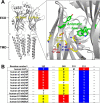
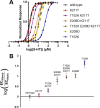

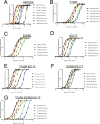
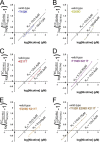
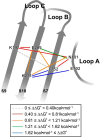
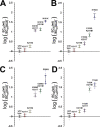
References
Publication types
MeSH terms
Substances
Associated data
- Actions
- Actions
- Actions
- Actions
Grants and funding
LinkOut - more resources
Full Text Sources
Other Literature Sources

